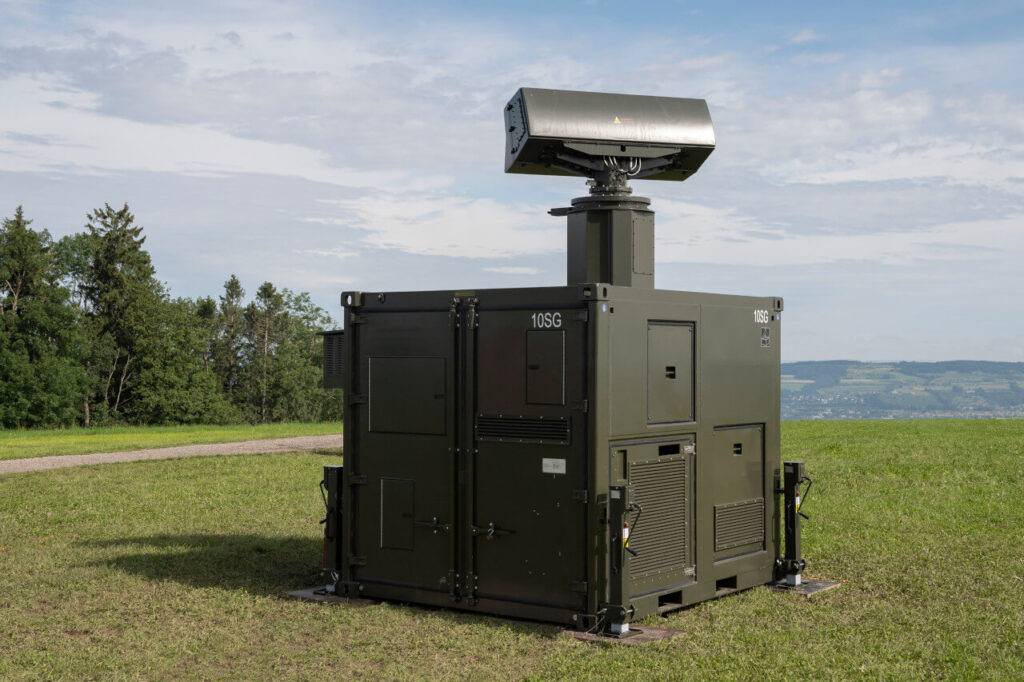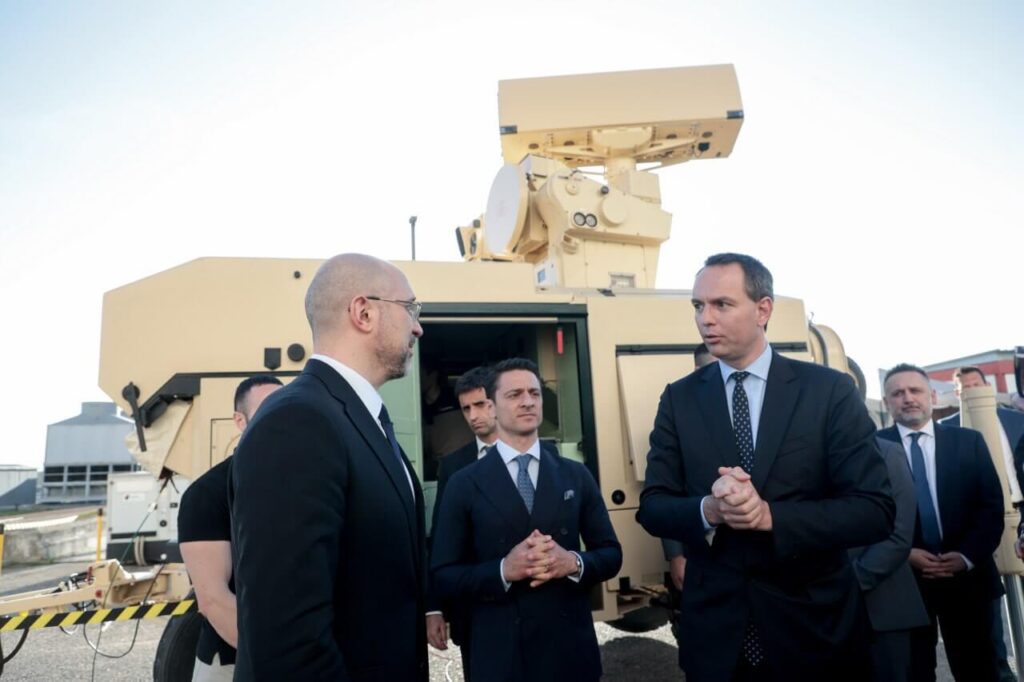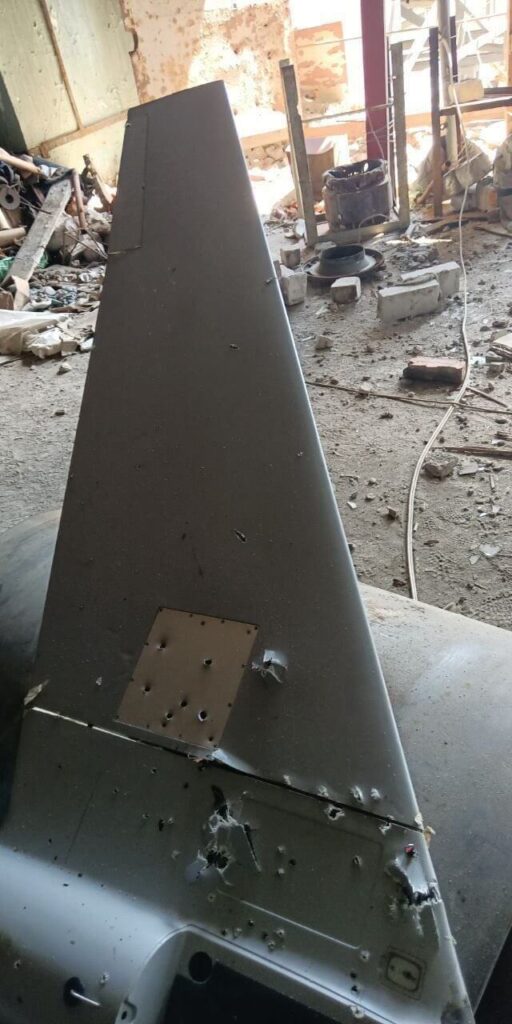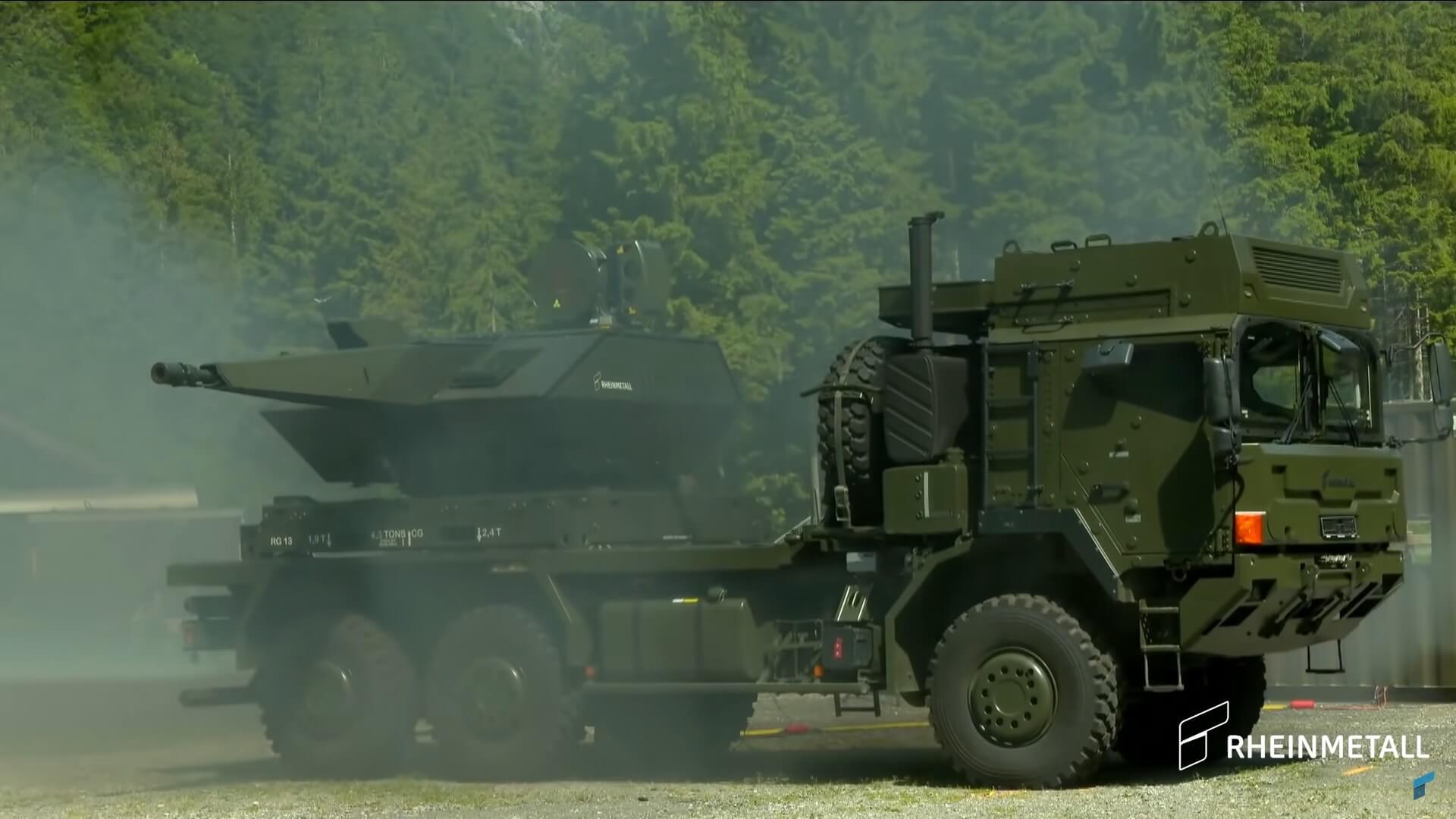With this week’s update on Germany’s military assistance to Ukraine, the German government finally confirmed the delivery of the well-known and notorious Skynex air defence system.
But what is it exactly, and why is it so notorious? What is the story of the Skynex air defence system? I’ll answer these and other questions in the course of this article.
Skynex — What is it about?
Skynex is a full-blown cannon-based air defence system — worth over 90 million euros — which is used for close-range protection. At ranges where air defence systems such as the US or German provided Patriot systems are less suited (both in terms of costs and efficiency) to engage their targets since they are using guided missiles, instead of projectiles.
The Bundeswehr deployed MANTIS — a very similar system — in Mali in 2018 to protect its military camp before handing over all of its systems to Slovakia as part of the Ringtausch programme.
A Skynex air defence system in the baseline configuration consists of the Command and Control unit, which Rheinmetall affectionately calls “Oerlikon Skymaster”, the Oerlikon X-TAR3D Tactical Acquisition Radar, the Oerlikon Multi Sensor Unit and up to four Oerlikon Revolver Guns Mk3.
Other elements such as the Oerlikon High Energy Laser or the Oerlikon Skynex SkyKnight Missile Launcher Unit could be integrated to deal better with specific threats, although it is not known whether this is the case in Ukraine.

For Ukraine, the elements of the air defence system were/are mounted on Rheinmetall’s HX trucks with a load-handling system, making it much more mobile overall.
In total, Ukraine can effectively protect an area of 4×4 kilometres against fighter aircraft, helicopters, small to large drones, mortar shells and more. The deployment scenarios are therefore very diverse, although I assume that Skynex will be used to protect certain parts of large cities like Kyiv, mainly against Shahed 131 or Shahed 136 drones.
The story of Skynex in Ukraine
At the beginning of December 2022, Rheinmetall announced that they are delivering two Skynex air defence systems to an “international customer”. The order is worth around 182 million euros and the systems will be delivered in early 2024.
Even though Rheinmetall did not explicitly mention Ukraine as the customer, it was reported in German government circles on the same day that the systems were intended for Ukraine, as Handelsblatt reported at the time. The costs were to be borne entirely by the German government.
Official confirmation from Rheinmetall did not come until months later, even though the rumours remained and were fuelled by Rheinmetall itself.
The Papperger interviews
At the end of February 2023 — almost three months later — Rheinmetall CEO Papperger gave an interview to the online platform The Pioneer about the “Zeitenwende”, the war in Ukraine and, of course, Rheinmetall as a company.
In this interview, Papperger says that the two air defence systems that protected the German Chancellery in Berlin are currently deployed in Ukraine.
He specifically mentions Skynex systems (plural) and Skyranger too, so it is relatively unclear whether he actually meant two Skynex systems and mentioned Skyranger casually, or whether there was only one Skynex system in Ukraine and a Skyranger was also delivered to Ukraine.

Soon after, the news spread like wildfire on social media. Skynex is already in Ukraine!
I can imagine that his statements were received with limited enthusiasm both in Germany and in Ukraine. After all — if this is true — there were reasons why this had been kept secret until then.
Interestingly, the rumour also spread that these are test systems that are to be tested in Ukraine. However, the Bundeswehr has already been deploying MANTIS (very similar to Skynex) in Mali since 2018 and Qatar is also already using the air defence system. In other words, these are by no means test systems. At least when we are talking about Skynex.
Interestingly, however, less than a month later he denied media reports that Skynex was already in use in Ukraine.
In an interview with the Swiss magazine NZZ, he spoke of an agreement to deliver the stationary Skynex system to Ukraine by the end of 2023. In addition, further mobile versions of the Skyranger type would be delivered soon.
When asked about the interview he had previously given to The Pioneer, he said only briefly that none of the Skynex systems are currently in use in Ukraine.
In my opinion, however, very few people believed what he said about Skynex in the second interview. Overall, it sounded more like he was trying to backpedal because he had just spilled the beans about something he wasn’t allowed to do.
The Swiss theory
Meanwhile, I have heard from several people that a deployment in Ukraine would not have been possible at all, as either the air defence systems or the ammunition — possibly both — were manufactured in Switzerland.
Even though it is true that Rheinmetall has a large air defence capability in Switzerland, according to his statement in the interview with the NZZ, the systems were manufactured in Italy, so Switzerland had no say in a possible export.
Of course, this says nothing about the origin of the special AHEAD ammunition, but I could not find any official statements in this regard.
First statement from Ukraine
On the 26th of April 2023, Denys Shmyhal, Prime Minister of Ukraine, announced on Telegram that he had visited Rheinmetall’s air defence site Rheinmetall Italia S.p.A. (based in Rome).
Among other things, he inspected the Skynex air defence system and wrote that such batteries are already in use in Ukraine.


According to my research, this was the first official statement and many people — including myself — took this as confirmation of Papperger’s statements, even though official confirmation from the German government was still pending.
Months went by without pictures or videos of the system in Ukraine seeing the light of day, or another statement being published on the German or Ukrainian side — at least until August 2023.
At the beginning of August, images of a Russian drone shot down by Ukraine were published on Telegram. Based on the published images, one could conclude that AHEAD ammunition was used and therefore that the Skynex system was involved.
However, I would like to point out that these are not official reports and cannot be verified. But, I did my best and wasn’t able to find these images via Google or Yandex earlier than the beginning of August, so at least they really do seem to be from that time.



The perforated drone indicates the use of air burst ammunition, or especially AHEAD ammunition. This is particularly effective and programmable 35 mm ammunition for use against air targets.
Each round of AHEAD ammunition contains 152 tungsten sub-projectiles, which are ejected immediately in front of the target. You can think of it like a shotgun.
Even if the projectile would not hit the target directly (when not using air burst ammunition), a cloud of over 150 tungsten projectiles builds up in front of the target so it is hit in any case.
A promotional video about Rheinmetall’s Skynex air defence system clearly shows how it works on the targets.
Even if this was of course no proof of the use of Skynex in Ukraine, it was at least a strong indicator that had a certain effect in connection with the previous statements by Papperger and Shmyhal, even if I have to admit that the pictures completely bypassed the big players on X.
In principle, after the Prime Minister’s statement, the publication (early November 2023) by the Commander in Chief of the Armed Forces of Ukraine Valerii Zaluzhnyi in the Economist was for most people a renewed sign of life from Skynex.
There he listed the Skynex air defence system alongside systems such as Gepard, Patriot, IRIS-T and NASAMS as having been delivered. More specifically, he wrote that the number of air defence systems in Ukraine had been massively increased by the West since the start of the war and named these systems among others.
Naturally, Skynex was once again the “talk of the town”. However, there had been no confirmation from Rheinmetall or the German government, nor had we seen any photos or videos of the system in action in Ukraine at the time.
Rheinmetall also did not respond to an enquiry from me late last year in this regard.
Is it there? It is there!
On Thursday, the 4th of January 2024 it finally happened. After more than a year of waiting, the German government confirmed the delivery of the first of two Skynex systems to Ukraine on its website.
I must honestly admit that I have rarely been so excited lately to post an update on my social media channels. Felt good!
The Ukrainian President Zelenskyy naturally also thanked directly on his social media channels and wrote:
The advanced Skynex system […] will strengthen our sky shield and save more lives. I am grateful to Germany for once again demonstrating its leadership in this area.
Zelenskyy on X
According to Rheinmetall, the second Skynex air defence system will also be delivered to Ukraine in the near future. We are talking about Q1 2024, i.e. by the end of March 2024.
To this day, I am delighted that Skynex has finally arrived in Ukraine — or at least that the delivery has been confirmed — and that the system will probably save lives there every day.
What will happen to the systems already delivered, whether they will be sent back to Germany or whether Ukraine now has, in theory (if the delivery really took place), three Skynex systems in service is unknown and, in my estimation, it will not be known before the end of the war in Ukraine.
If you liked this post, consider following me on X, Bluesky, or Telegram. If you like, you can also leave me a tip on Ko-fi.


